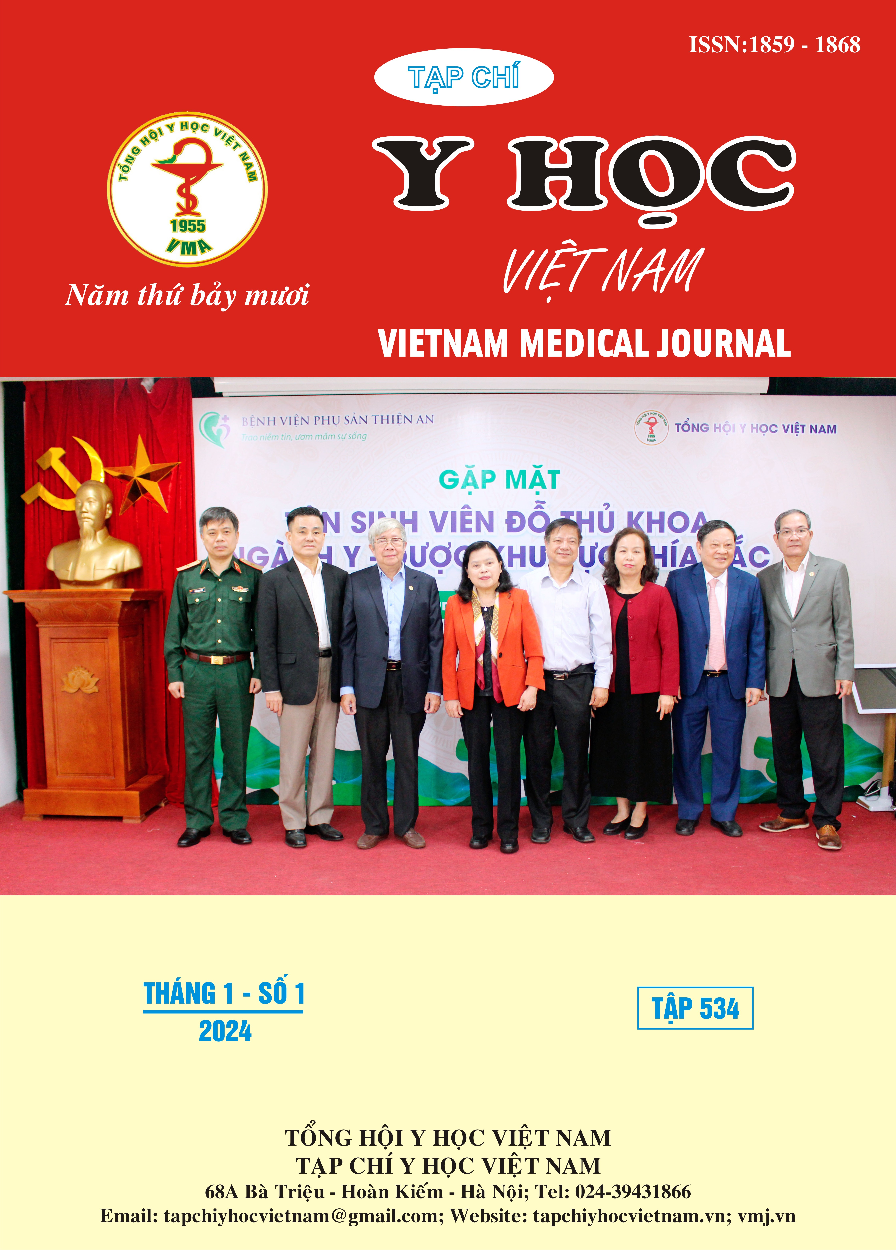ĐẶC ĐIỂM LÂM SÀNG, CẬN LÂM SÀNG VÀ CÁC YẾU TỐ NGUY CƠ TỬ VONG NỘI VIỆN CỦA BỆNH NHÂN MỞ KHÍ QUẢN SAU THỞ MÁY
Nội dung chính của bài viết
Tóm tắt
Tổng quát: Mở khí quản thường được thực hiện ở những bệnh nhân thở máy dài ngày như đột quỵ, chấn thương sọ não, viêm phổi… để thuận tiện cho việc chăm sóc hô hấp. Tuy nhiên, mở khí quản làm tăng nguy cơ nhiễm khuẩn đường hô hấp, cùng với các biến chứng sau mở khí quản có thể làm tăng tỷ lệ tử vong nội viện. Mục tiêu: mô tả các đặc điểm lâm sàng, cận lâm sàng của bệnh nhân mở khí quản sau thở máy và tìm hiểu các yếu tố nguy cơ tử vong nội viện. Phương pháp: Nghiên cứu đoàn hệ tiến cứu trên 119 bệnh nhân mở khí quản sau thở máy điều trị tại bệnh viện Phục hồi chức năng - Điều trị bệnh nghề nghiệp từ tháng 10/2022 đến tháng 4/2023. Kết quả: Tuổi bệnh nhân trung vị là 51 tuổi, nam gấp 3 lần nữ. Trung vị số lượng bệnh đồng mắc là 3 bệnh, thường gặp là đái tháo đường, tăng huyết áp, bệnh phổi mạn và rối loạn lipid máu. Triệu chứng cơ năng thường gặp là ho, rối loạn tri giác và khó thở. Hình ảnh X quang ngực đa số là đông đặc và tổn thương mô kẽ kèm hay không kèm tổn thương phế nang, 82,4% bệnh nhân có viêm phổi. Trung vị của thời gian thở máy là 25 ngày, thời điểm mở khí quản là 9 ngày, đa số ở thời điểm 7-14 ngày (60,5%), có 10/119 bệnh nhân được rút ống mở khí quản thành công. Tỷ lệ tử vong chung là 17,6%. Các yếu tố nguy cơ độc lập của tử vong nội viện gồm: số lượng bệnh đồng mắc (OR = 2,98, KTC 95% 1,66 – 5,36, p<0,0010), SpO2 (OR = 0,83, KTC 95% 0,71 – 0,97, p=0,020), X quang phổi có hình ảnh đông đặc (OR = 6,63, KTC 95% 1,13 – 38,9, p = 0,036) và thời điểm mở khí quản (OR = 0,25, KTC 95% 0,07 – 0,91, p = 0,036). Kết luận: Các bệnh nhân được mở khí quản sau thở máy là những bệnh nhân đột quỵ, chấn thương sọ não, viêm phổi. Bệnh nhân có số lượng bệnh đồng mắc càng nhiều, SpO2 lúc nhập viện càng thấp, XQ ngực có hình ảnh đông đặc phổi và thời điểm mở khí quản càng trễ thì nguy cơ tử vong càng cao, cần xem xét mở khí quản sớm cho bệnh nhân để giảm nguy cơ tử vong nội viện.
Chi tiết bài viết
Tài liệu tham khảo
2. Namin AW KB et al (2021). Tracheotomy Outcomes in the Medical Intensive Care Unit. Missouri medicine. 2021;118(2).
3. Levy L et al. Mortality Risk Factors in Patients Admitted with the Primary Diagnosis of Tracheostomy Complications: An Analysis of 8026 Patients. International journal of environmental research and public health. Jul 25 2022.
4. Nguyễn Thị Mỹ Dung. Khảo sát tình hình mở khí quản xuyên da nong tại Bệnh viện Đại học Y Dược Thành phố Hồ Chí Minh từ năm 2018 đến 2022. Đại học Y Dược Tp. Hồ Chí Minh; 2022.
5. Nguyễn Kim Ca. Chăm sóc mở khí quản có canuyn bóng chèn ở bệnh nhân cao tuổi. Đại học Y Dược TP Hồ Chí Minh; 2002
6. Võ Minh Lộc, Nguyễn Triều Việt (2022). Khảo sát đặc điểm lâm sàng và đánh giá kết quả mở khí quản trên bệnh nhân viêm phổi thở máy tại bệnh viện đa khoa thành phố Cần Thơ năm 2019-2021. Tạp chí Y học Việt Nam, tập 510.
7. Nguyễn Văn Tú, Lê Công Định (2015). Nghiên cứu đặc điểm chức năng thông khí trên bệnh nhân bệnh lý sọ não được mở khí quản thở máy. Trường Đại học Y Hà Nội.
8. Kollef MH et al. Clinical predictors and outcomes for patients requiring tracheostomy in the intensive care unit. Crit Care Med. Sep 1999;27(9).


